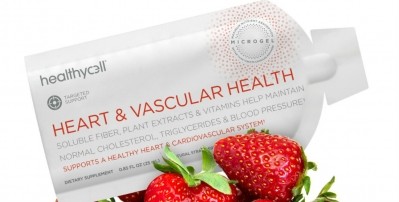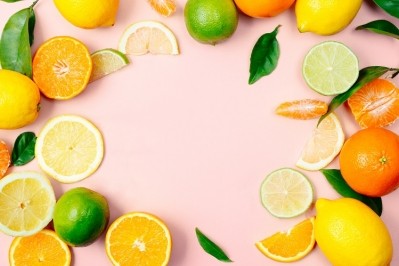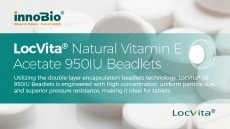Editor's Spotlight
Are ‘bioactive gels’ the future of multivitamins? Healthycell thinks so

His company’s latest product, the Bioactive Multi gel packs launched last month, delivers several essential nutrients to help consumers meet or exceed the 100% daily value of these nutrients with one slurp of a berry-flavored gel pack.
The delivery format was developed by Dr Mark Neveu, founder of nutraceutical R&D services firm Wellomics and a partner of Healthycell. Dr Neveu has a background in pharmaceuticals, having worked as a senior research scientist at Pfizer for eight years.
“He actually left Pfizer because he believed that nature had a ton of healing power, but that it wasn’t being fully realized because of the common kinds of manufacturing techniques of using dehydrated ingredients, tableting, capsuling, and putting things in powders,” Giampapa told us.
“So he decided to basically shift his career into making natural ingredients more bioavailable so people could get more benefits and close that long-standing innovation gap in the industry.”
The problem with tablets
Giampapa started a regenerative medicine company back in 2012, the predecessor of Healthycell, which was officially established in 2015.
As the name implies, HealthyCell focuses on cellular health. It’s first line of products focus on healthy aging, but Giampapa wanted more rapid growth for the company, something the healthy aging and cellular health focus couldn’t deliver.
“I realized that cell health is still something that the general public is struggling to understand a little bit,” he said.
“I think with the new campaigns from Centrum like ‘Feed your Cells’ and all that stuff that you’re seeing on TV, it’s going to help a company with the brand name Healthycell, and help people understand cells as kind of like you know your bodies compilation of cells, keep your cells healthy, make sure all your tissues are healthy.”
But he decided to pivot the company a bit with the new multivitamin product launch. He started reading research results of studies on bioavailability, and that’s how he reconnected with Dr Neveu’s, whom Giampapa had met earlier in his career.
“I went up [to Dr Neveu’s lab at the University of New England] a few times. I helped fund it through our company to a certain extent,” he explained.
“What we did—it was pretty interesting. We took the best-selling tablet multivitamins and capsules on the market, and we basically put them in water, in test tubes that simulated intestinal fluid, and simulated gastric fluid.”
They found that when the tablets and capsules disintegrated—not dissolved—"it basically formed like, what kind of looks like a layer of sand, particles, at the bottom of the test tube. There was virtually nothing that was soluble in the actual fluid.”
Creating the gels
A gel format was the best alternative to tablets, capsules, and even gummies for multivitamins, the team decided.
“We use micronized nutrient particles on the fat soluble side. On the water soluble side, we screened to make sure things are truly water soluble,” Giampapa explained.
The manufacturing process of the bioactive gels requires high shear emulsification at different steps of the process, with a specific order of additions, and specific temperatures at each step.
“Then we take the oil phase and the water phase, and we basically infused that into a gel matrix, and that gel matrix is that prebiotic gel matrix of acacia gum, soluble fiber, citrus pectin. So it’s more natural, you don’t have the binders, fillers, coatings, and anti-caking agents—that’s another benefit.”
This was all developed last year, and the company was ready to launch. “But we had a huge problem. Tasted like crap and it smelled like crap. So we figured no one was going to take this unless you make it organoleptically pleasing,” Giampapa said. The final product that was launched last month features a berry flavor.
Is it really more bioavailable?
There is one ongoing clinical trial exploring the finished product’s bioavailability, Giampapa told us, though he could not share details of the study other than that it was being done by a contract research organization in New Jersey.
“We just finished production of scale a couple weeks ago,” he said. “Right now, I can’t make claims such as ‘bioactive gels delivers 450% more absorption than tablets.’”
“We do expect that we should have results in the next 60 to 90 days on this particular delivery system as we produced to scale. Right now, the claim that we’re making is it’s delivering maximal absorption, because what we do know is that the generally accepted surrogate is solubility.”



















